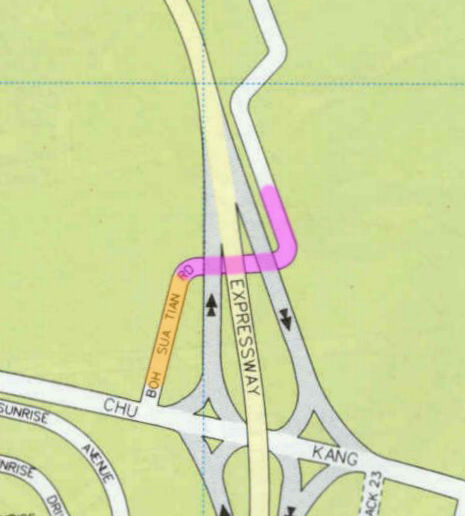- May 23, 2022
The North-South Corridor, Singapore’s 11th expressway, is currently being built across the width of the island. There is a line of construction sites stretching 21 kilometres from Woodlands in the north to Marina Bay in the south, and it will take another four years before the expressway opens in 2026. It will be Singapore’s costliest expressway, with a price tag of up to $8 billion.
The expressway will be a crucial transport link connecting the towns of Woodlands, Sembawang, Yishun, Ang Mo Kio, Bishan, and Toa Payoh with the City. Hence, construction has to take place inside built-up areas. I am interested in the impact of expressway construction on these towns, and as it will take another four years, this period is a good chance to track changes in the suburban landscape.
The northern stretch covering Sembawang and Yishun will be an aboveground viaduct, which will transition to an underground tunnel as Yishun gives way to Ang Mo Kio.
I recently explored the construction sites running down the width of Ang Mo Kio town. Travelling south to north, I covered stretches of Marymount Road and Ang Mo Kio Avenue 6, from Bishan-Ang Mo Kio Park to Yio Chu Kang MRT Station.
Below is a map of Ang Mo Kio town; the yellow line is the future North-South Corridor. Virtually the entire line is a continuous stretch of construction sites; I spent an afternoon travelling along the line, taking photos and notes.

Along Marymount Road.

Marymount Road, facing north, approaching the junction with Ang Mo Kio Avenue 1. The area adjoining the road is adorned by Singapore’s national bird, the (construction) crane.

The junction of Marymount Road and Ang Mo Kio Avenue 1, facing north. Marymount Road is temporarily curved because of construction. Residents living around this junction will have to endure this state of affairs for up to 2030 - after the North-South Corridor is done, Teck Ghee MRT Station of the Cross Island Line will have to be built.

Marymount Road, facing south, between Sin Ming Avenue (background) and Ang Mo Kio Avenue 1 (foreground), from the 30th and top floor of Block 310A Ang Mo Kio Avenue 1. The curves in the once-straight road are apparent here.

The junction of Marymount Road and Ang Mo Kio Avenue 1, facing south. The flats of Bishan town lie in the background.

The junction of Ang Mo Kio Avenue 6 and Street 24, facing south, from the 11th and top floor of Block 203 Ang Mo Kio Avenue 3. Here, piling and other work were going on right next to the block of flats; the cranes felt so close to me I could have touched them with a pole. I felt sorry for the residents trapped by the constant cacophony.

A colourful sound barrier in front of Block 119 Ang Mo Kio Avenue 3.

Construction sites next to Ang Mo Kio Avenue 6, facing south, from the 25th and top floor of Block 700B Ang Mo Kio Avenue 6. At the bottom is the junction with Ang Mo Kio Avenue 3.

Ang Mo Kio Avenue 6, facing north, to the east of Ang Mo Kio Town Garden West. The construction has split in half the once-straight road.

The junction of Ang Mo Kio Avenue 6 and Avenue 5, facing south, from the 13th and top floor of Block 646 Ang Mo Kio Avenue 6.

A sound barrier in front of Block 649 Ang Mo Kio Avenue 5.

Many photos were made possible by common corridors of flats facing the main road. This is generally more common in older flats. Ang Mo Kio town is a relatively old town, so I am fortunate to be able to track the construction of the North-South Corridor from good vantage points.








































